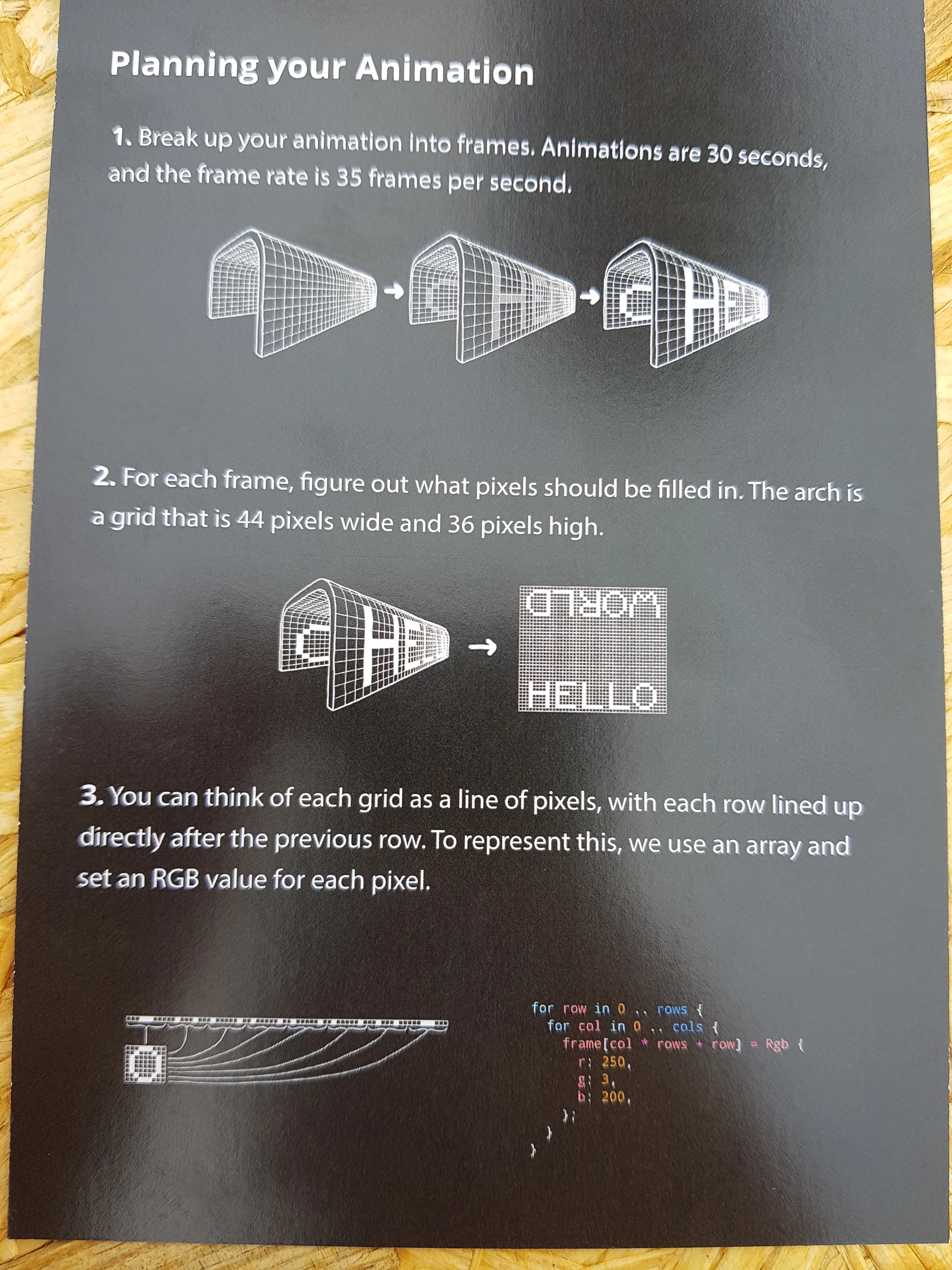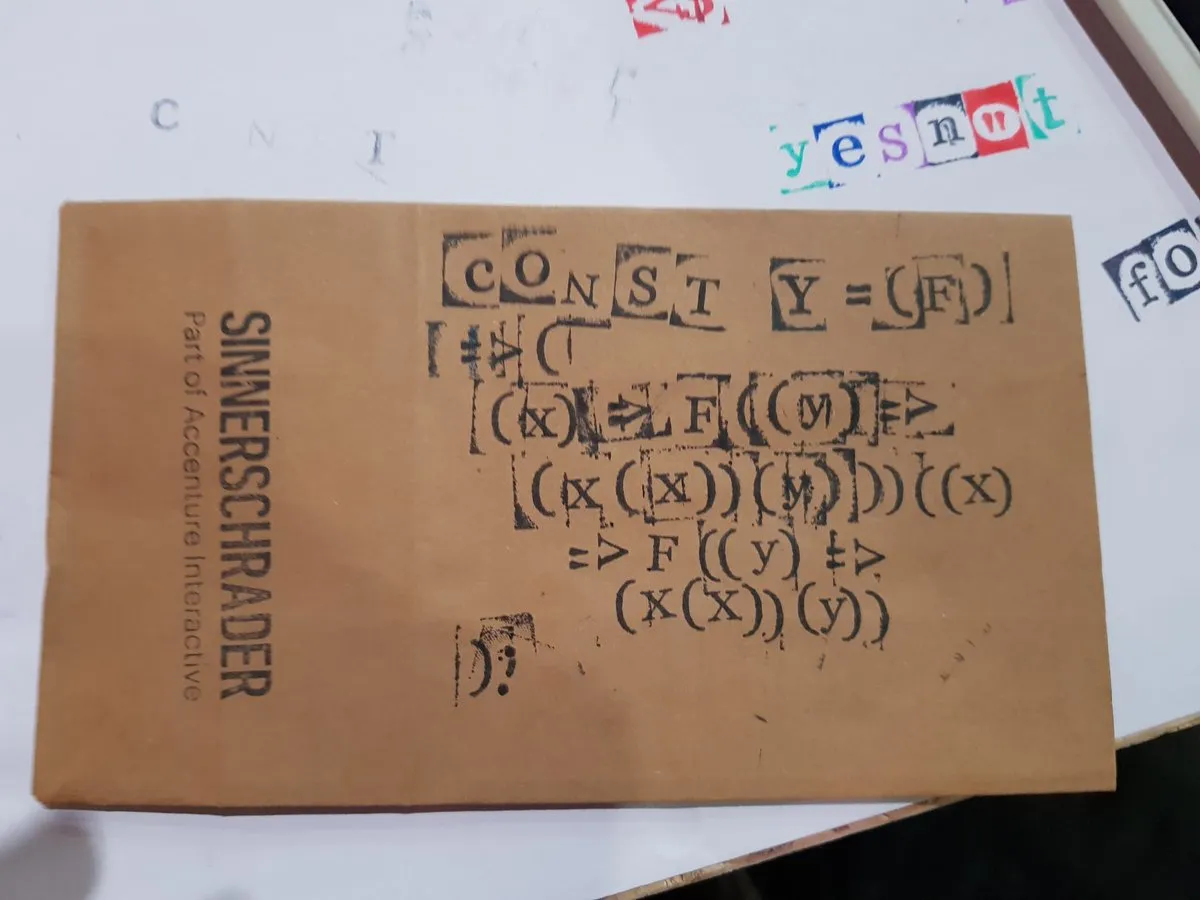CssConfEu JsConfEu 2018
← Back to homeIntro
At the beginning of this month I had the privilege to visit CssConfEu and JsConfEu for the first time.
This post doesn’t have a coherent direction and I don’t intend on coming up with one. Still I’d like to write down a few misc notes - so let’s try that!

- Talks have been recorded and are available on YouTube - go and watch some! They’re really good!
- Conference participants and speakers appeared to be a diverse, colorful crowd. Many happy people and a friendly, open atmosphere.
- A friend from work already visited before and this made navigating the conference more fun.
- This conference is carried by sponsors, which is a contrast to most of the events I’ve visited so far.
- To me this brings with it a stronger focus on work.
Experiencing the arch
So Mozilla had a thing in collaboration with Ian Brill called the arch. It was beautiful. Here’s why:
It was a tunnel of color lit cells together with an invitation to program an animation for it. This flyer was distributed in the vicinity:


Because I had done something similar before I had a desire to get a particular video playing on the arch.
First I needed to get hold of the material and get it into shape. So I dug out a few console commands:
# Download video:
youtube-dl "https://www.youtube.com/watch?v=oHg5SJYRHA0"
# Resize video to desired resolution:
ffmpeg -i RickR…YRHA0.mp4 -vf scale=44:36 smallRolled.mp4
# Cut video to desired length:
ffmpeg -i smallRolled.mp4 -t 00:00:30 shortSmallRolled.mp4
# Export video frames with the desired frame rate:
ffmpeg -i shortSmallRolled.mp4 -r 35/1 frames/frame-%03d.bmpI gathered the resulting frame images in an array and went ahead to build a script to get the frames into JavaScript. A friend found the pixel-bmp library which would come in handy in parsing the frame data. I later discovered that the uncompressed data led to too big of a script so that I decided to drop every second frame. From this I came up with the following code:
const frameNames = require('./framenames.json');
const fileNames = frameNames.map(f => `./frames/${f}`);
const pixelBitmap = require('pixel-bmp');
const fData = [];
const finish = Promise.all(fileNames.map((fName, fIndex) => {
if ((fIndex % 2) === 0) {
return;
}
return pixelBitmap.parse(fName).then(([image]) => {
const frame = [];
for(let i = 0; i < image.data.length; i+=4) {
frame.push({
r: image.data[i],
g: image.data[i+1],
b: image.data[i+2],
});
}
fData[Math.floor(fIndex / 2)] = frame;
});
}));I later discovered that the image as read from the frames needed to be transposed to prevent ending up with weird images and it took me a moment to get a function to correct for the indices:
function frameMod(i, sliceSize, total) {
const drift = i * sliceSize;
const rem = Math.floor(drift / total);
return Math.floor((i * sliceSize + rem) % total);
}The thing particularly nice about frameMod was that it was easily testable
because I knew the index mapping needed to look like this:
[ 0, 1, 2,
3, 4, 5,
6, 7, 8,
].map(i => frameMod(i, 3, 9)) ≣ [
0, 3, 6,
1, 4, 7,
2, 5, 8,
];Next I would just print the data to console and pipe that into a file:
finish.then(() => {
const transposedFrameData = fData.map((frame) => {
const transposedFrame = [];
for (let i = 0; i < frame.length; i++) {
const px = frame[frameMod(i, 44, frame.length)];
transposedFrame.push(
px.r,
px.g,
px.b,
);
}
return transposedFrame;
});
console.log(`const frameData = ${JSON.stringify(transposedFrameData)};`);
});Time to stick it together! Instead of interpolating between frames I decided to just show every frame twice to accommodate for the dropped frames.
const frameData = require('./frameData');
function writeFrame(frameIndex, frame) {
const wantedFrame = frameData[Math.floor(frameIndex / 2)] || [];
for (let i = 0; i < frame.length; i++) {
frame[i] = (wantedFrame.length > 0)
? wantedFrame[i]
: Math.floor(Math.random() * 255);
}
}
export function transform(buffer, rows, cols, frameCount, fps, isFirst) {
const frameSize = 3 * rows * cols;
for (let i = 0; i < frameCount; i++) {
const frame = new Uint8Array(buffer, frameSize * i, frameSize);
writeFrame(i, frame);
}
}
export default function () {
return Promise.resolve({
transform,
})
}Half a day of hunting strange bugs later there was one more conference that’s not a stranger to love.
Getting sidetracked with the Y-Combinator
 At the booth of SinnerSchrader they offered the chance to play with stamps and customize a paper bag that one could fill with snacks afterwards.
At the booth of SinnerSchrader they offered the chance to play with stamps and customize a paper bag that one could fill with snacks afterwards.
I had loads of fun trying to imprint a JavaScript y-combinator onto a paper bag.
The source code I was going for should have looked like this:
const Y = (F) => (
(x) => (x(x))
)(
(x) => (F((y) => x(x)(y)))
);Without the excessive parenthesis you can end up with an example a bit more clearer which I found on blog.klipse.tech:
const Y = f => (x => x(x))(x => f(y => x(x)(y)));Here are some example usages:
const fac = Y(f => n => (n === 0 ? 1 : n * f(n-1)));
// fac(5) -> 120
const fib = Y(f => n => (n < 2 ? n : (f(n - 1) + f(n - 2))));
// [0, 1, 2, 3, 4, 5, 6, 7, 8].map(fib) -> [0, 1, 1, 2, 3, 5, 8, 13, 21]The real beauty behind this is that recursion itself can be abstracted away
and we could even enhance the calls of f to add additional magic.
Indeed blog.klipse.tech also has a nice example of this where they demonstrate how one can use this to add memoization.


